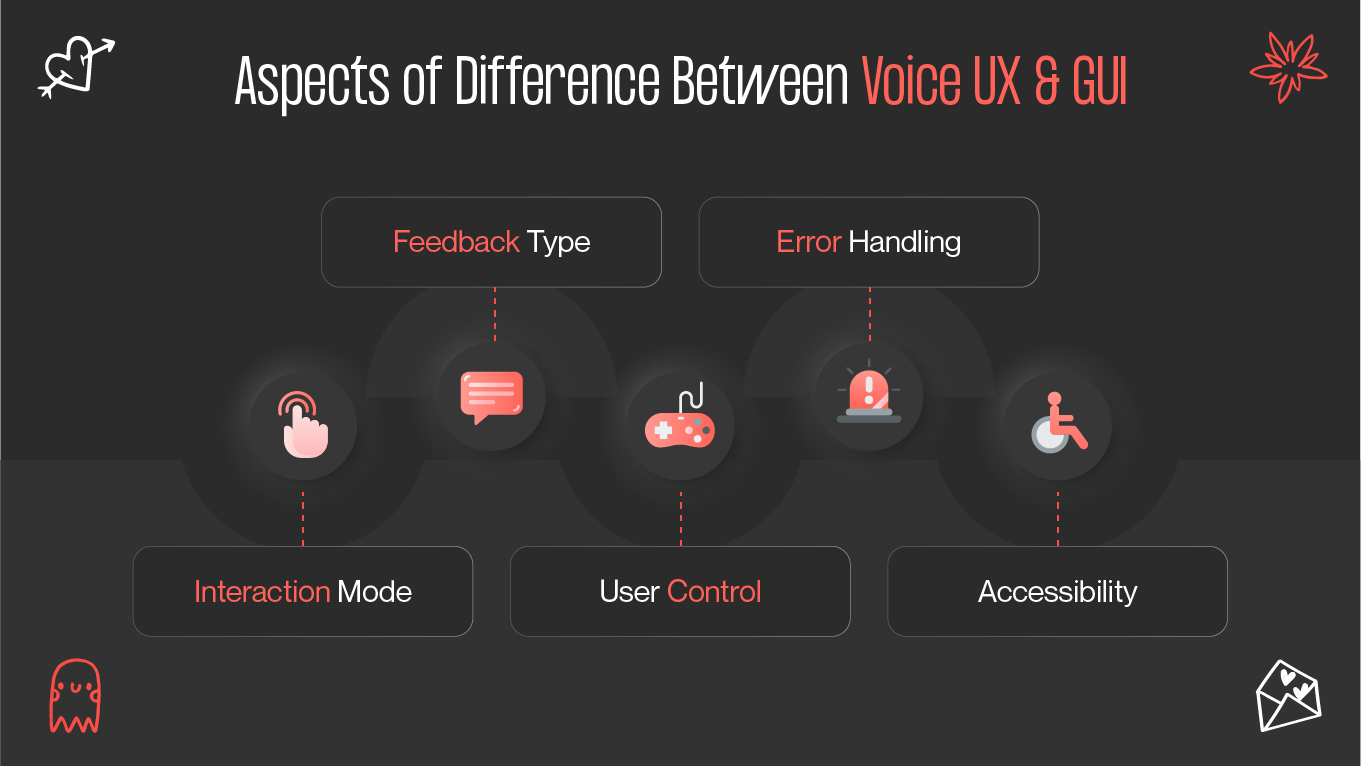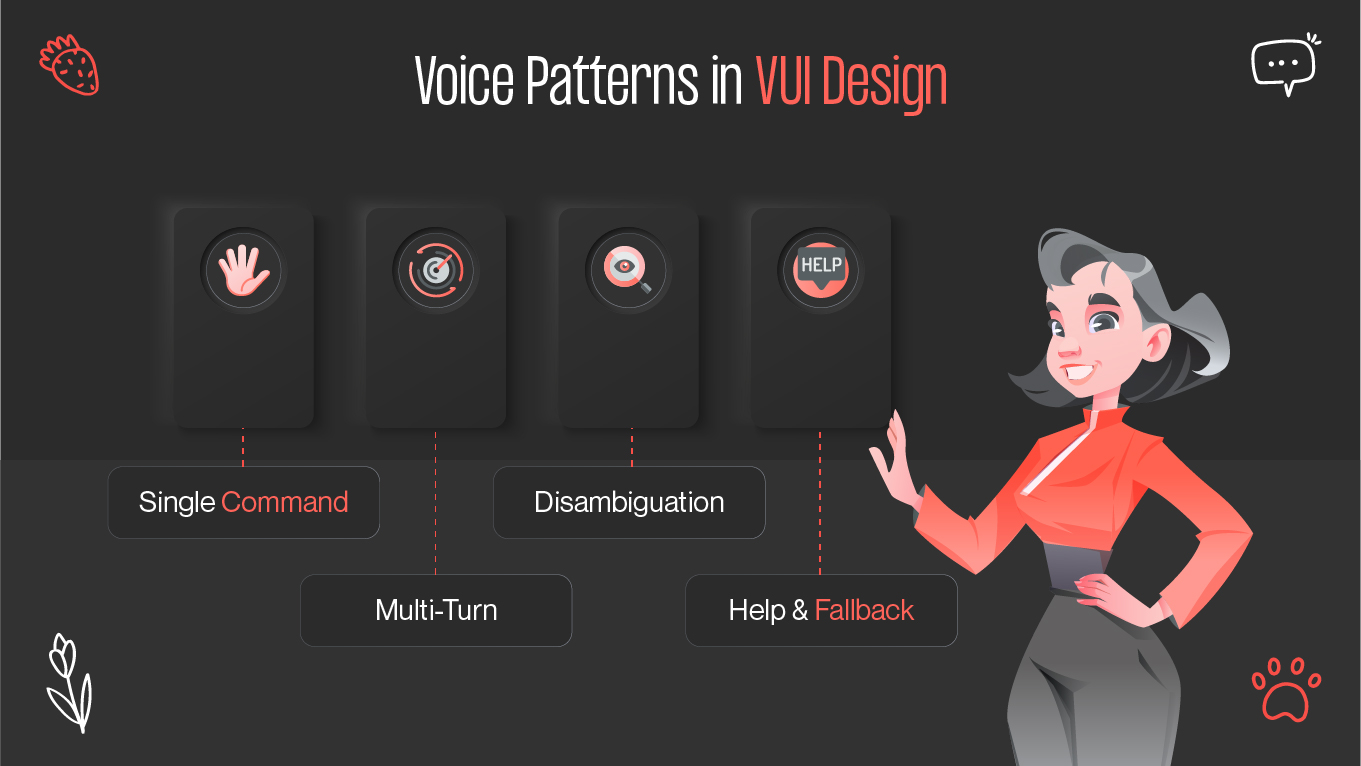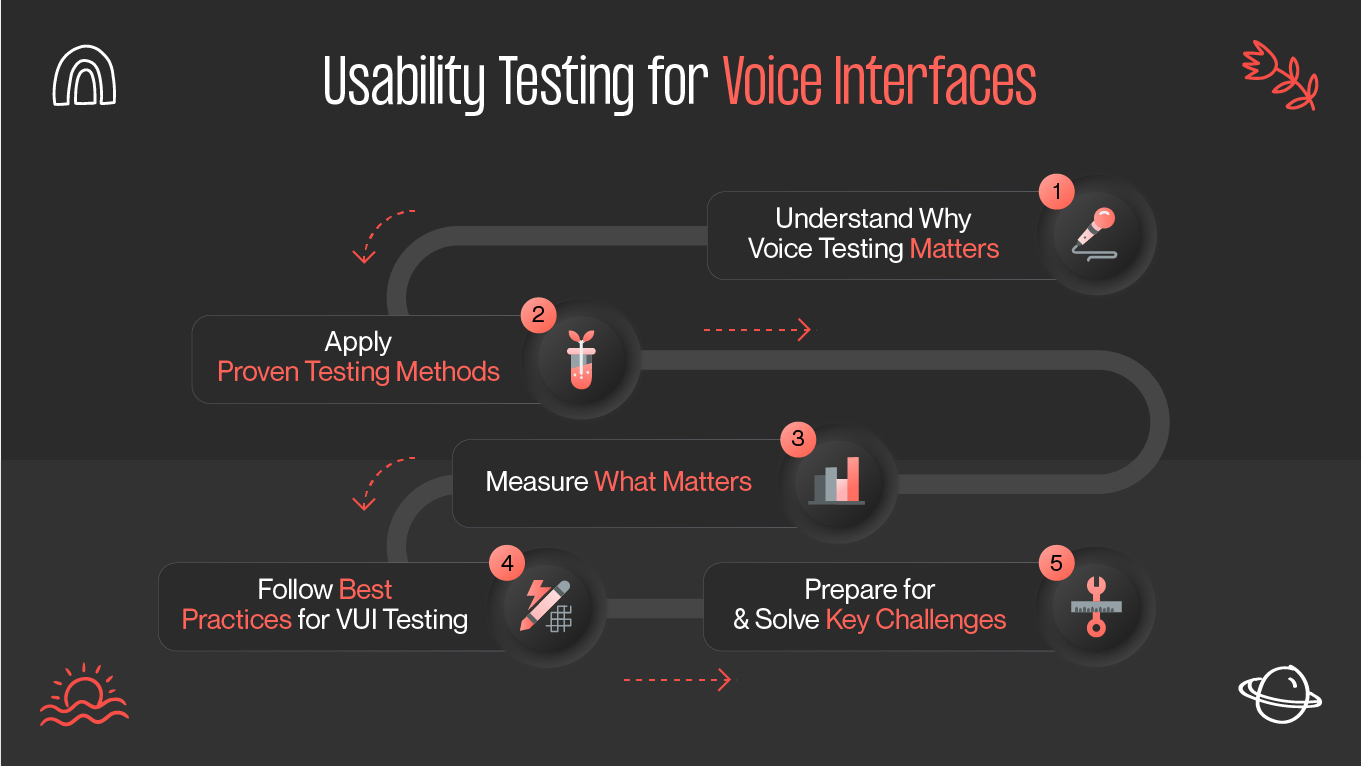Voice User Experience (Voice UX) is quickly emerging as a key component of contemporary digital communication. By 2025, voice search will be used by about 20.5% of people globally, up over 1% from the year before [1]. The increasing use of speech interfaces in daily life is shown by this adoption boom.
A Voice User Interface (VUI) enables users to interact with devices through spoken commands, eliminating the need for screens or buttons. Voice UX design focuses on crafting these interactions to be intuitive, efficient, and natural.
With the proliferation of smart speakers and virtual assistants like Alexa and Google Assistant, designing effective voice experiences necessitates an understanding of conversational UX flow and the application of natural language processing (NLP). In this blog post, we will delve into the key differences between voice and graphical interfaces, explore common voice interaction patterns, and discuss voice UI best practices for usability testing to help you design superior voice experiences.








